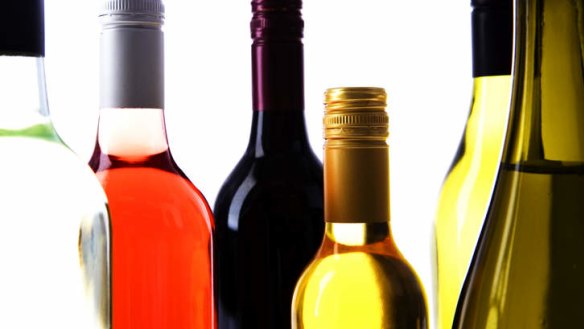Alcohol: the sober truth
It's the heart and soul of any self-respecting drop — as drinkers enduring Dry July will soon discover.

Edenvale shiraz looks the part.
It has a discreet white label with a scribbly illustration of a grapevine, a name that sounds as though it might come from somewhere within the Eden Valley and a tasting note rich in marketing palaver.
''This well-structured Australian shiraz has rich, plummy flavours and a smooth taste,'' the label advises.
Then comes the kicker. It's a virtual wine, a would-be-if-it-could-be - that is, if it contained enough alcohol. Almost all of it has been removed. On purpose, hard as it is to believe.
At 0.5 per cent alcohol, it barely fulfils the usual meaning of what makes a wine, but I'm guessing there are a fair few drinkers taking part in Dry July who might be grateful for the 0.5. It's better than nothing, right?
Alcohol, the thing Dry July-ers are removing from their diet this month, has a big role to play in wine. It's times like these we find out exactly how big.
''Alcohol contributes significantly to the roundness, fullness and texture in a wine,'' explains Richard Gawel, a research scientist at the Australian Wine Research Institute in Adelaide. ''Rip it out and you rip out its soul.''
That's gotta hurt.
After water, alcohol is wine's second most important component. Remove it and all that is left is water, acid, sugar and flavour.
And that's exactly how some de-alcoholised wines taste: sharp acid and disjointed sweetness. Life has been largely extinguished.
It can start with maybe a centrifuge - sometimes referred to as spinning-cone technology - that, through high speed, forces the separation of alcohol from the more delicate volatiles that comprise scent and flavour.
Or there's the increasingly popular membrane technology that seems a little less brutal but achieves the same thing, by passing the wine through very fine membranes. Winemakers are already using the technology to take a few per cent of alcohol off high-alcohol wines, to find a more pleasing ''sweet spot'', but there's a big difference between a spot of fine-tuning and major surgery.
Taking so much out of wine usually results in something having to be added back.
In a recent Federal Court hearing into the GST implications for de-alcoholised wines, the maker of Edenvale - JMB Beverages - revealed what it added to the wine following the de-alcoholising process: ''volatile esters, grape juice concentrate, low-sugar juice and, in some instances, rainwater''.
The most common addition to de-alcoholised wines is sugar because it is the only thing that is going to provide a similar mouth feel. Sometimes makers add too much, which then requires more acid to be added. It can be a slippery slope.
Balance, if there is such a thing in this instance, is the key. Well, balance between what's left, the sugar and acid.
Unfortunately, not many de-alcoholised or non-alcohol wines achieve it.
Blue Nun, a mega-successful German wine that knows a lot about sweetness, comes closer to a degree of balance than most.
Its Blue Nun alcohol-free white wine ($11.40 a bottle and less than 0.5 per cent alcohol) is a sweet confected wine with a peachy scent and light spritz.
De-alcoholised wines require the drinker to suspend the usual quality judgments they associate with alcohol-driven wines.
Presumably there's a reason they are being consumed and it has little to do with seeking esoteric enjoyment.
But if they are your choice, go for the sparkling wines and the whites.
Maybe it's the distraction of the bubbles, or maybe it's because we are used to the taste of sweet white wines, but the whites generally make the big adjustment better.
The acid in the Edenvale chardonnay ($9), for example, is somehow far easier to take than the overbearing sharp acid in the Edenvale shiraz ($9) and rose´ ($9). The bubbles in Maggie Beer's sparkling ruby cabernet ($16) bring extra liveliness to its strawberry sherbet zip. It literally fizzes on the tongue like a Fruit Tingle.
One de-alcoholised wine producer who takes the job seriously is Ariel Vineyards, based in the Napa Valley in California.
It claims to be the only producer of its type to win wine show medals against wines made with alcohol. All awards are noted on its website (arielvineyards.com) and, by the look of them, the Los Angeles County Fair seems to have been a particularly happy hunting ground for the company.
Ariel also gives vintage dates for its wines and claims to have aged its chardonnay, merlot and cabernet sauvignon in oak. Just what form the oak took isn't mentioned. It also uses cork instead of screw cap, thus giving the impression - at least to American drinkers - of its serious intent as well as, of course, increasing the chances of cork taint just like ''real'' wine, thus blurring the line between alcohol and no alcohol altogether.
I was assured the Ariel 2009 cabernet was the best de-alcoholised red going around. At $20 a bottle, it would need to be. If you accept the admittedly tenuous argument that reds don't generally take to having alcohol ripped out of them as well as whites, then yes, it was ''better'' than the other reds I tasted. At least it wasn't too sweet and that foxy, wild, cherry liqueur thing on the nose was pretty interesting and lingered for a while in the mouth before turning sour. It almost made it to the end without fault but fell at the last hurdle.
The coup de grace?
Just like bottles of tomato sauce and jams, the back label on the Ariel 2009 cabernet recommends you ''refrigerate after opening''.
Never seen that one before.